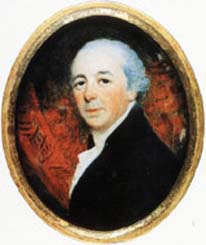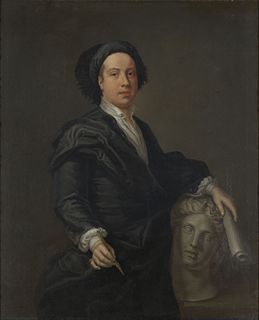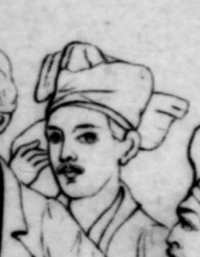Related Research Articles

John Nash was one of the foremost British architects of the Georgian and Regency eras, during which he was responsible for the design, in the neoclassical and picturesque styles, of many important areas of London. His designs were financed by the Prince Regent and by the era's most successful property developer, James Burton. Nash also collaborated extensively with Burton's son, Decimus Burton.

Augustus Welby Northmore Pugin was an English architect, designer, artist and critic who is principally remembered for his pioneering role in the Gothic Revival style of architecture. His work culminated in designing the interior of the Palace of Westminster in Westminster, London, England, and its iconic clock tower, later renamed the Elizabeth Tower, which houses the bell known as Big Ben. Pugin designed many churches in England, and some in Ireland and Australia. He was the son of Auguste Pugin, and the father of Edward Welby Pugin and Peter Paul Pugin, who continued his architectural firm as Pugin & Pugin. He also created Alton Castle in Alton, Staffordshire.

William Kent was an eminent English architect, landscape architect, painter and furniture designer of the early 18th century. He began his career as a painter, and became Principal Painter in Ordinary or court painter, but his real talent was for design in various media.

Sir Charles BarryFRS RA was a British architect, best known for his role in the rebuilding of the Palace of Westminster in London during the mid-19th century, but also responsible for numerous other buildings and gardens. He is known for his major contribution to the use of Italianate architecture in Britain, especially the use of the Palazzo as basis for the design of country houses, city mansions and public buildings. He also developed the Italian Renaissance garden style for the many gardens he designed around country houses.
John James was a British architect particularly associated with Twickenham in west London, where he rebuilt St Mary's Church and also built a house for James Johnson, Secretary of State for Scotland, later Orleans House and since demolished. Howard Colvin's assessment of him was that of "a competent architect, but he lacked inventive fancy, and his buildings are for the most part plain and unadventurous in design".

Sir John Wolfe Barry, the youngest son of famous architect Sir Charles Barry, was an English civil engineer of the late 19th and early 20th century. His most famous project is Tower Bridge over the River Thames in London which was constructed between 1886 and 1894. After receiving a knighthood in 1897, he added "Wolfe" to his inherited name in 1898 to become Sir John Wolfe Barry.

Edward Middleton Barry RA was an English architect of the 19th century.

Charles Barry Jr. (1823–1900) was an English architect of the mid-late 19th century, and eldest son of Sir Charles Barry. Like his younger brother and fellow architect Edward Middleton Barry, Charles Jr. designed numerous buildings in London. He is particularly associated with works in the south London suburb of Dulwich.

Decimus Burton was one of the foremost English architects and urban designers of the 19th century. He was the foremost Victorian architect in the Roman revival, Greek revival, Georgian neoclassical and Regency styles. He was accomplished also in the cottage orné, picturesque and neogothic styles. He was a founding fellow and, later, vice-president of the Royal Institute of British Architects, and architect to the Royal Botanic Society from 1840 and an early member of the Athenaeum Club, London, whose club premises he designed and which the company of father, James Burton, the pre-eminent property developer of Georgian London, built. Modern architectural historians Guy Williams (1990) and Dana Arnold (2004) contend that Burton's contribution to architecture has been underestimated: as a consequence of the misattribution to John Nash of many of his works; of his vituperation by his neo-gothic rival, Augustus Pugin; and of the consequent retention of his archives by his family.

James Wyatt was an English architect, a rival of Robert Adam in the neoclassical and neo-Gothic styles. He was elected to the Royal Academy in 1785 and was its president from 1805 to 1806.

Henry Marc Brunel was an English civil engineer and the son of the celebrated engineer Isambard Kingdom Brunel and grandson of civil engineer Marc Isambard Brunel.
The year 1859 in architecture involved some significant architectural events and new buildings.

Sir Robert Smirke was an English architect, one of the leaders of Greek Revival architecture, though he also used other architectural styles. As architect to the Board of Works, he designed several major public buildings, including the main block and façade of the British Museum. He was a pioneer of the use of concrete foundations.

Edward Blore was a 19th-century English landscape and architectural artist, architect and antiquary.

George Edmund Street, also known as G. E. Street, was an English architect, born at Woodford in Essex. Stylistically, Street was a leading practitioner of the Victorian Gothic revival. Though mainly an ecclesiastical architect, he is perhaps best known as the designer of the Royal Courts of Justice on the Strand in London.

Augustus Charles Pugin was an Anglo-French artist, architectural draughtsman, and writer on medieval architecture. He was born in Paris, then the Kingdom of France, but his father was Swiss, and Pugin himself was to spend most of his life in England.

Thomas Leverton Donaldson was a British architect, notable as a pioneer in architectural education, as a co-founder and President of the Royal Institute of British Architects and a winner of the RIBA Royal Gold Medal.

Alfred Barry was the third Bishop of Sydney serving 1884–1889. Over the course of his career, Barry served as headmaster of independent schools, Principal of King's College London university and founded Anglican schools such as Shore School. He officiated at the funeral of Charles Darwin in 1882.

James William Wild was a British architect. Initially working in the Gothic style, he later employed round-arched forms. He spent several years in Egypt. He acted as decorative architect to the Great Exhibition of 1851, and designed the Grimsby Dock Tower, completed in 1852. After a considerable break in his career he worked on designs for the South Kensington Museum, and designed the British embassy in Tehran. He was curator of the Sir John Soane's Museum from 1878 until his death in 1892.
The history of the Palace of Westminster began in the Middle Ages when it was used as a royal residence. The English Parliament of the United Kingdom has met there since 1295. The Palace burned down in 1834 and was replaced by the modern building.
References
- ↑ "John Lewis Wolfe (1798–1881), architect, was born On This Day 10 April 1798". The Streatham Society. Retrieved 23 May 2021.
- 1 2 3 4 5 6 7 Blissett, David G. (2004), Wolfe, John Lewis (1798–1881), Oxford National Dictionary of Biography, https://doi.org/10.1093/ref:odnb/57399.
- ↑ "(Sir) Charles Barry". Dictionary of Scottish Architecture. Retrieved 23 May 2021.
- ↑ "WOLFE BARRY, SIR JOHN (1836-1918)". English Heritage: Blue Plaques. Retrieved 23 May 2021.